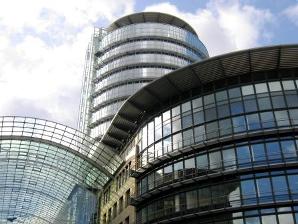 Recent Trends in Technical Due Diligence
Recent Trends in Technical Due Diligence
Is your ‘too good to be true’ deal really sustainable ?
Lack of Capital post GFC has lead to a significant neglect of R&M and Capex spend.
Having worked on property due diligence valued over $10B since the GFC, Napier & Blakeley have seen only nominal spend on upkeep compared with previous years.
During this period the increasing trend has been a notable reduction of Repair and Maintenance (R&M) and Capital Expenditure (Capex) budgets. Whilst this strategy may have been necessary in some circumstances e.g. postponement of non-essential Capex, we have found too commonly evidence of non-compliance regarding statutory maintenance such as testing, auditing and reporting of essential safety measures and fire safety systems.
Reduced Life Expectancy and Premature Capex
Recent technical due diligence and condition assessments have also found that the lack of R&M and Capex budgets for economic life driven plant and equipment overhauls and refurbishments has resulted in increased short and medium term Capex.
To put this in context, without appropriate R&M, major plant items may have an economic expected life of (say) 25 years, however, the reduction or removal of maintenance can result in a major shortfall in expected life to around 15 years.
The Reaction
Astute purchasers have become aware of this risk and look for these patterns in their technical due diligence reporting to ensure that appropriate Capex costs are factored into the purchase price to account for a vendor’s R&M expenditure shortfalls.
Condition assessments, maintenance reviews, energy assessments and risk weighted strategic Capex forecasts have become 2010’s essential tools for good asset and facility management and sustainable property solutions.
Legislation requires that most commercial office property will be required to have a formal energy performance rating in the next few years and many will require this imminently or in the next few months.
This Legislation has caught most by surprise.
For purchasers and owners it is now important to understand where a property currently sits from a formally rated energy performance perspective.
It is also important to understand how the rating can be maintained at the same level over a period of time, and how it can be strategically and cost effectively improved to avoid future obsolescence.
The Building Energy Efficiency Disclosure Act 2010 is on the cusp of taking effect. The transitional provisions (1 November 2010 to 30 October 2011) require the disclosure of a building’s energy performance through a NABERS Energy base or whole building rating, for all commercial office property with a net lettable area of 2,000m² or more that is offered for sale or lease. However, with only 388 commercial office buildings registered nationally to date, it would seem the message may not have reached all concerned parties with property interests that fall under the Act’s disclosure requirements.
Anxious Vendors
With fines in excess of $110,000 for breaches of the Act’s obligations; including advertising the property for sale or lease, after 1 November 2010 without an appropriate NABERS Energy rating, there is significant anxiety in the market place.
The latest information from the Department of Climate Change and Energy Efficiency (DCCEE) will surely increase anxiety levels, as they have confirmed that neither exemptions nor extensions will be granted for lack of knowledge or where assessments are currently underway but not yet completed.
It will be interesting to see how owners, selling and leasing agents and DCCEE react.
Astute Purchasers
The story doesn’t end once the rating has been achieved. Purchasers want to know about the processes and procedures that owners have in place, the potential risks of maintaining the rating at the current level and what plans are in place, or could be implemented, to improve the rating, perhaps strategically in line with planned Capex or future lease expiries. Such initiatives are considered in terms of funding opportunities, reduced energy costs, pay back periods and commercial outcomes.
For more information on Technical Due Diligence, Capex Forecasts, NABERS Ratings and Sustainable Property Solutions contact Napier & Blakeley.
NSW / ACT / WA / NZ - Alastair Walker - 02 9299 1899
VIC / SA / TAS - Peter Frith, Rob Howells - 03 9915 6300
Comments are closed.
Categories
- Careers at Napier & Blakeley (13)
- Commentary (70)
- Financiers Reports (1)
- Insurance (6)
- Maintenance (4)
- Make Good (10)
- Project Advisory (1)
- Property Tax (74)
- Quantity Surveying (28)
- Regulatory Compliance (2)
- Sustainability (36)
- Technical Due Diligence (30)
- Uncategorized (8)


